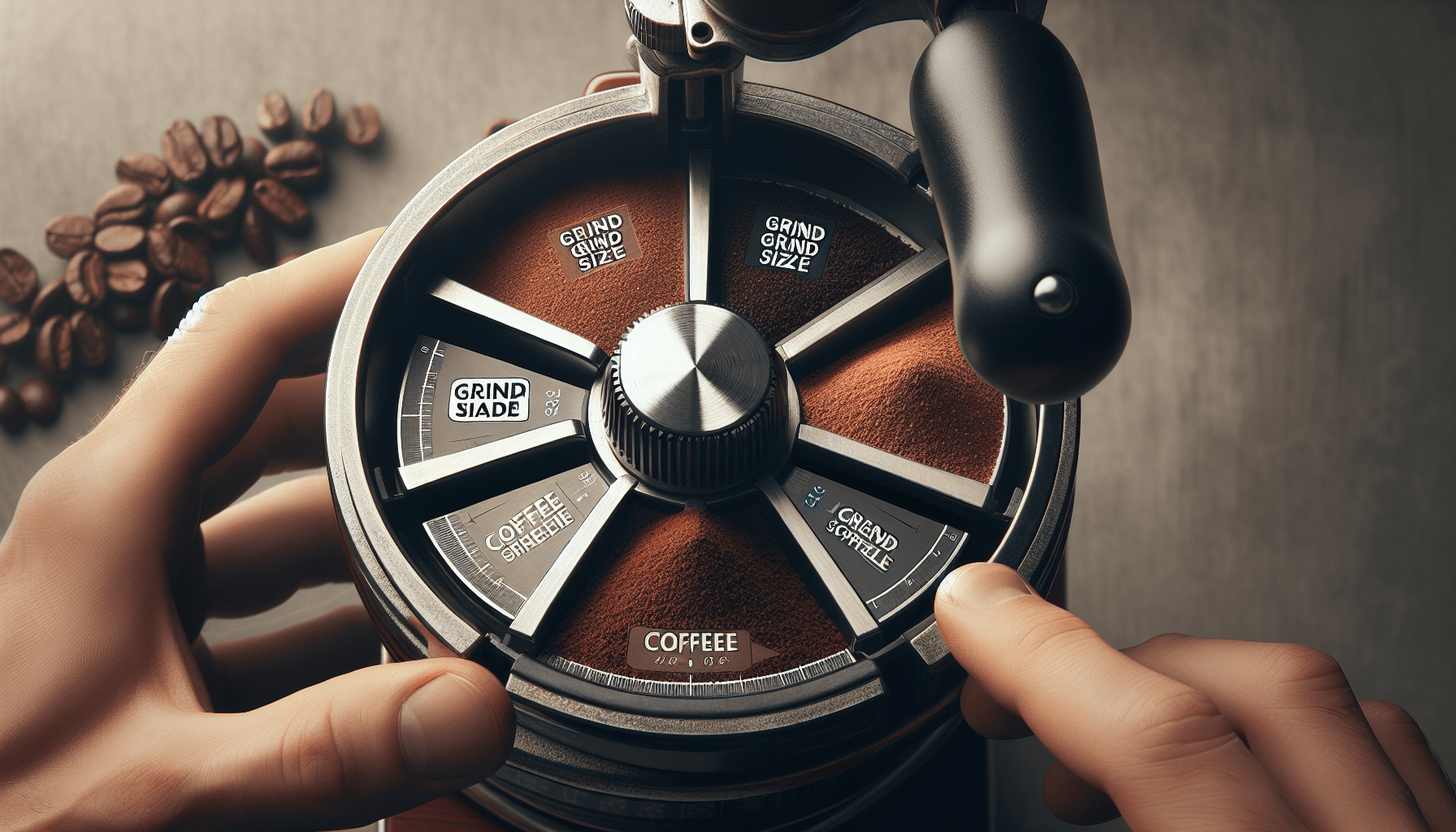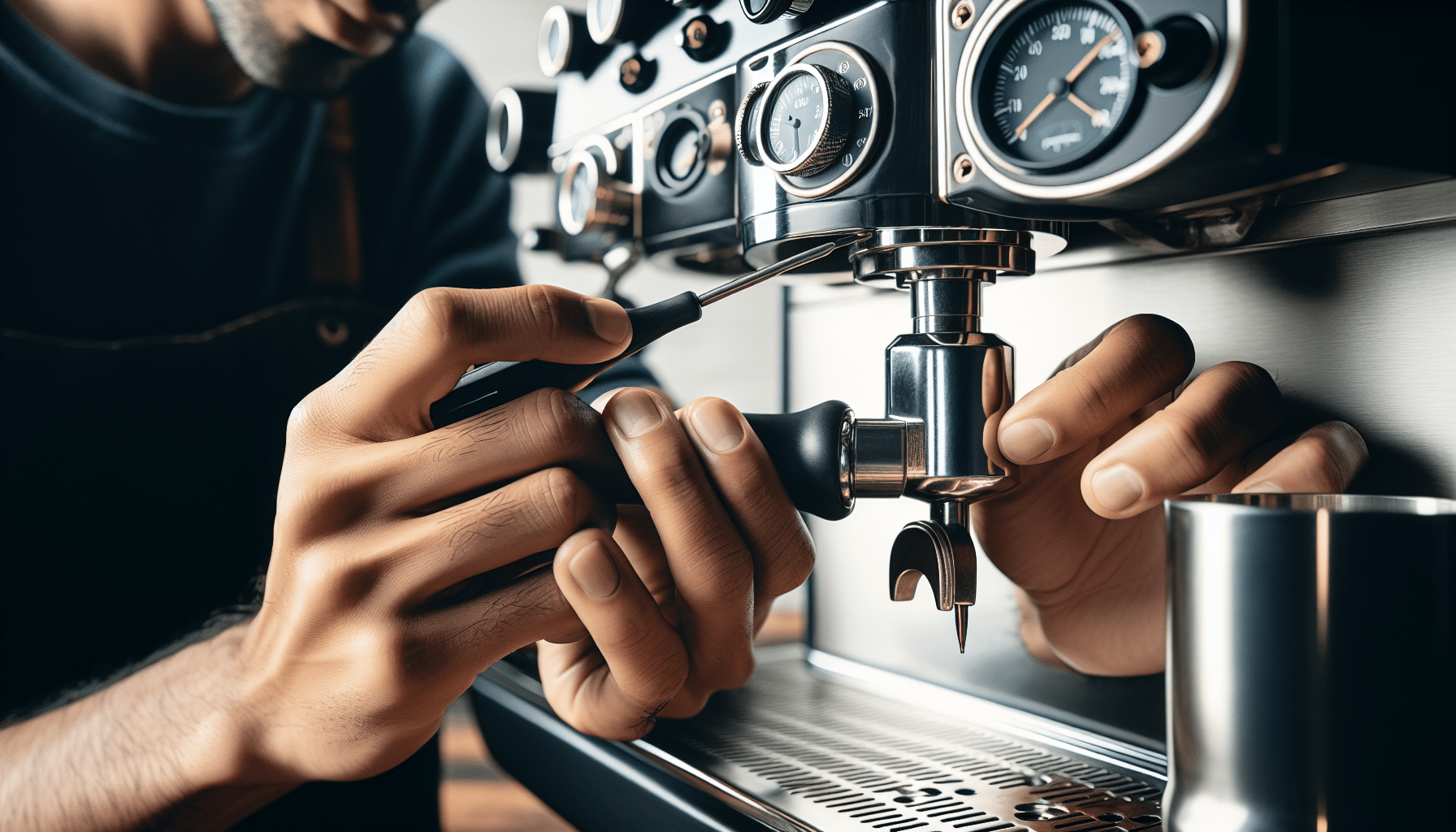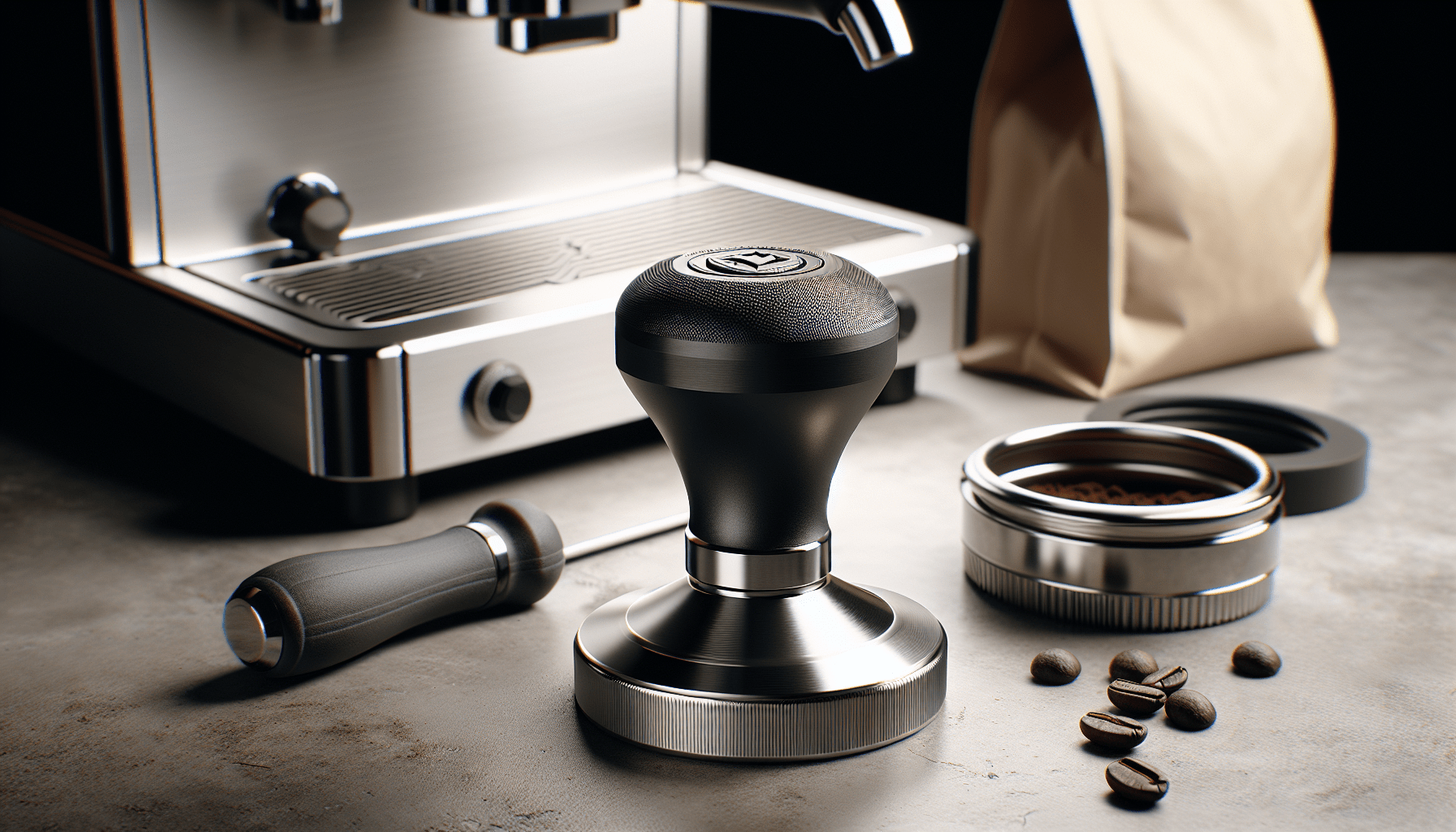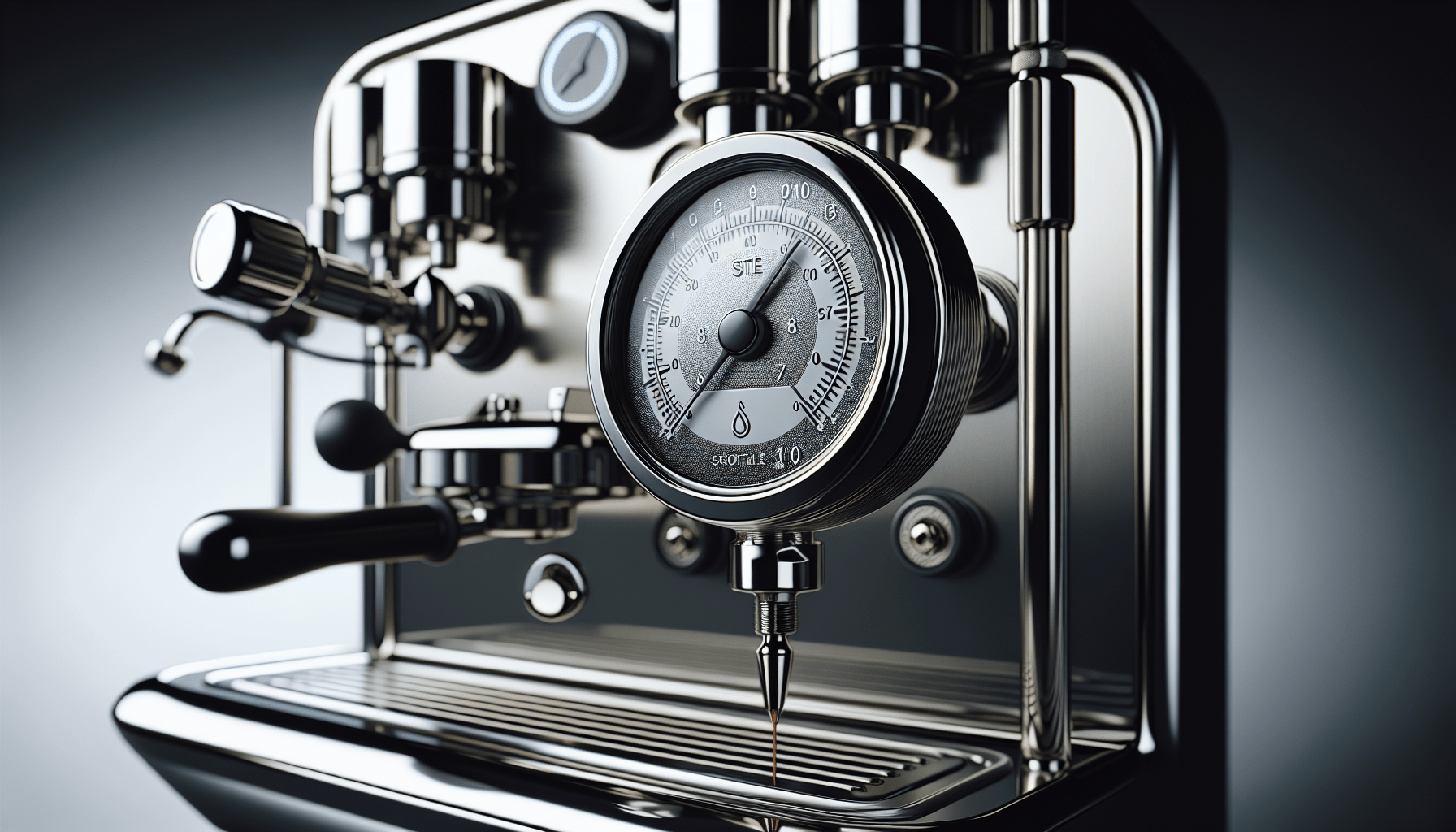In the world of semi-automatic espresso machines, the significance of grind size adjustment cannot be overstated. It is a crucial factor that can make or break your espresso experience. By altering the grind size, you have the power to fine-tune the extraction process, achieving the perfect balance of flavors in your cup of joe. Whether you prefer a bold, intense shot or a delicate, nuanced flavor profile, understanding the impact of grind size adjustment is key. Join us as we explore the fascinating world of grind size adjustment and unlock the secrets to elevating your at-home espresso game.
Importance of Grind Size Adjustment
Achieving Ideal Extraction
When it comes to brewing coffee, grind size adjustment plays a crucial role in achieving the ideal extraction. The extraction process involves water passing through the coffee grounds and extracting the desired flavors and aromas. By adjusting the grind size, you can control the extraction rate and ensure that you are extracting the optimal amount of soluble compounds from the coffee.
The ideal extraction is often described as the “golden cup” – a brew that balances both strength and flavor. Over-extraction can lead to a bitter and unpleasant taste, while under-extraction results in weak and watery coffee. Grind size adjustment allows you to find the sweet spot where you extract just the right amount of flavors, creating a well-rounded and enjoyable cup of coffee.
Controlling Strength and Taste
Grind size adjustment also gives you control over the strength and taste of your coffee. A finer grind will increase the extraction rate, resulting in a stronger and more robust cup. On the other hand, a coarser grind will slow down the extraction, producing a milder and subtler flavor profile.
Depending on your personal preferences and the characteristics of the coffee beans, you can experiment with different grind sizes to achieve the desired strength and taste. This flexibility allows you to customize your brewing process and cater to individual preferences, ensuring that each cup of coffee is tailored to your liking.
Adapting to Different Beans
Another advantage of grind size adjustment is its ability to adapt to different types of coffee beans. Various beans have unique characteristics, such as density, oiliness, and moisture content, which can affect the extraction process. By adjusting the grind size, you can compensate for these characteristics and ensure that you are extracting the optimal amount of flavor from each type of bean.
For example, lighter roasted beans tend to be more dense and require a finer grind size to ensure proper extraction. On the other hand, darker roasted beans are often more brittle, so a coarser grind size may be necessary to avoid over-extraction. By understanding the characteristics of the beans you are working with and adjusting the grind size accordingly, you can bring out the best flavors in each batch of coffee.
Avoiding Over- or Under-Extraction
One of the main reasons grind size adjustment is crucial is to avoid over- or under-extraction. Over-extraction occurs when the coffee grounds are too finely ground, and the water extracts too many undesirable compounds, resulting in a bitter and unpleasant taste. Conversely, under-extraction happens when the coffee grounds are too coarse, and the water fails to extract enough flavor, resulting in a weak and lackluster cup.
By carefully adjusting the grind size, you can prevent these extraction imbalances and achieve a well-balanced cup of coffee. The goal is to find the sweet spot where the flavors are extracted optimally, bringing out the unique characteristics of the beans without any unpalatable elements. Grind size adjustment allows you to fine-tune the extraction process and create consistently delicious coffee every time.
Factors Affecting Grind Size
Bean Type
The type of coffee bean you are using greatly influences the optimal grind size. Different coffee varieties, such as Arabica or Robusta, have different densities and moisture levels, which can affect how the coffee grounds extract. In general, Arabica beans require a finer grind size due to their denser nature, while Robusta beans often benefit from a coarser grind to avoid over-extraction.
Furthermore, the origin of the beans can also impact the grind size. Beans from certain regions may have distinct characteristics, such as delicate flavors or higher oil content, which may require adjustments in the grind size to bring out the best in the coffee.
Roast Level
The roast level of the coffee beans is another crucial factor to consider when adjusting the grind size. Lighter roasts tend to be denser and require a finer grind size, as the water needs more time to penetrate the coffee grounds and extract the flavors. On the other hand, darker roasts are more porous and brittle, necessitating a coarser grind size to avoid over-extraction.
Finding the right grind size for each roast level allows you to optimize the extraction and fully showcase the flavors developed during the roasting process. Experimenting with different grind sizes can help you find the perfect balance between the roast profile and extraction, resulting in a well-rounded and flavorful cup of coffee.
Age of Beans
The age of the coffee beans can significantly impact the grind size. Freshly roasted beans release carbon dioxide gas, known as degassing, for several days after roasting. This degassing can create air pockets within the coffee grounds, affecting the extraction process. As a general rule, fresher beans require a coarser grind size, allowing the water to flow more easily through the coffee bed and enhancing the extraction process.
However, as the beans age, they lose carbon dioxide and become less porous. This change in density may necessitate a finer grind size to compensate for the decreased extraction rate. It is essential to consider the age of the beans and make adjustments to the grind size accordingly to maintain a consistent extraction quality.
Brewing Method
Different brewing methods require varying grind sizes to achieve optimal results. For example, espresso brewing demands a fine grind size to maximize the extraction within a short brewing time. On the other hand, brewing methods like French press or cold brew require a coarser grind to prevent excessive extraction and sediment in the final cup.
Understanding the nuances of each brewing method and adjusting the grind size accordingly is crucial for achieving the desired results. By matching the grind size to the brewing method, you can ensure that the extraction is well-balanced, resulting in a flavorful and satisfying cup of coffee.
Understanding Grind Size
Particle Size Distribution
Grind size refers to the size of the coffee particles after they have been ground. It is essential to consider the distribution of these particle sizes within the coffee grounds to understand how they will extract during brewing. The particle size distribution affects both the extraction time and the surface area available for extraction.
A consistent and uniform grind size distribution is vital for achieving an even extraction. If the size distribution is too varied, certain particles may be under-extracted, while others may be over-extracted. This inconsistency can lead to an imbalanced and uneven flavor profile in the final cup.
Extraction Time
The grind size has a direct impact on the extraction time. A finer grind size increases the surface area of the coffee particles, allowing for faster extraction. Conversely, a coarser grind size reduces the surface area and slows down the extraction process.
Controlling the extraction time is crucial for achieving a well-balanced cup of coffee. If the extraction time is too short, the coffee may taste weak and lacking in flavor. On the other hand, if the extraction time is too long, the coffee may become bitter and astringent. Adjusting the grind size allows you to regulate the extraction time and ensure that it falls within the desired range for your brewing method.
Surface Area
The grind size also determines the surface area available for extraction. Finer grounds have a larger surface area, allowing for more interaction between the coffee particles and the water. This increased surface area leads to a more efficient extraction, as more flavor compounds are extracted from the coffee.
To achieve a specific strength and flavor profile, you can adjust the grind size to control the surface area exposed to the water. By increasing or decreasing the surface area, you can fine-tune the extraction and achieve the desired balance of flavors in your coffee.
Extraction Yield
The extraction yield refers to the percentage of soluble compounds extracted from the coffee grounds during brewing. It is a measure of how successfully the flavors and aromas have been extracted.
Grind size adjustment directly impacts the extraction yield. A finer grind size generally leads to a higher extraction yield, as more soluble compounds are extracted from the coffee. Conversely, a coarser grind size may result in a lower extraction yield, as fewer solubles are extracted.
By adjusting the grind size, you can control the extraction yield and ensure that you are extracting the optimal amount of flavor from the coffee grounds. This allows you to achieve the desired strength and taste in your cup of coffee.
Mechanisms for Grind Size Adjustment
Burr Grinders
Burr grinders are widely regarded as the best type of grinder for achieving consistent and precise grind size adjustment. They consist of two serrated discs or burrs that grind the coffee beans to a uniform size. The distance between these burrs can be adjusted to control the grind size, allowing for precise customization.
Compared to blade grinders, which chop the coffee beans unevenly, burr grinders provide a more consistent particle size distribution. This consistency ensures a consistent extraction and eliminates any inconsistencies in flavor from uneven extraction.
Investing in a high-quality burr grinder is essential for achieving optimal grind size adjustment and enhancing the overall coffee brewing experience.
Stepless vs. Stepped Grinders
Burr grinders can be classified into two main types: stepless and stepped grinders. Stepless grinders offer infinite adjustment options for grind size, allowing for precise customization. The grind size can be adjusted by minutely turning a dial or knob, giving you complete control over the particle size.
On the other hand, stepped grinders have predetermined settings or notches that correspond to specific grind sizes. While they offer less precise adjustment options compared to stepless grinders, they are often more user-friendly and convenient for beginners or those who prefer a simpler approach.
Both types of grinders have their advantages and disadvantages, and the choice between them ultimately comes down to personal preference and brewing needs.
Grind Size Settings
Some burr grinders, particularly stepped grinders, come with preset grind size settings that are tailored for specific brewing methods. These settings provide a convenient starting point for adjusting the grind size and help users avoid the guesswork involved in finding the optimal setting.
However, it is important to note that these preset settings are not comprehensive and may not align perfectly with every coffee or brewing method. They serve as a useful starting point to save time and provide guidance, but further adjustment is often necessary to achieve the desired grind size for your specific needs.
Grind Size Consistency
Consistency in grind size is crucial for achieving consistent extraction and flavor in your cup of coffee. Uneven grind size can lead to over-extraction of finer particles and under-extraction of larger particles, resulting in an imbalanced flavor profile.
Investing in a high-quality burr grinder with good grind size consistency is essential for achieving optimal results. Cheaper or less precise grinders may produce a wide range of particle sizes, leading to inconsistencies in extraction and flavor.
Regularly cleaning and maintaining your grinder is also important to ensure consistent performance and grind size over time. Any buildup of coffee oils or debris can affect the grinder’s ability to produce consistent particle sizes, leading to uneven extraction.
Step-by-Step Guide to Adjusting Grind Size
Determining the Baseline
Before making any changes to the grind size, it is important to establish a baseline. Start with the manufacturer’s recommended grind size for your brewing method and use this as a starting point.
Brew a cup of coffee using the baseline grind size and take note of the strength, taste, and extraction time. This will serve as a reference for future adjustments and help you understand how different grind sizes affect the final result.
Making Incremental Changes
Once you have established a baseline, you can begin making incremental changes to the grind size. Small adjustments are key to finding the optimal grind size without making drastic changes that could result in over- or under-extraction.
Make small adjustments to the grind size and brew another cup of coffee. Take note of any changes in strength, taste, and extraction time. Continue making small adjustments until you find the grind size that produces the desired results.
Testing Extraction
During the adjustment process, it is important to regularly taste and evaluate the extracted coffee. Pay attention to the flavor, strength, and overall balance of the cup. If the coffee tastes too bitter or astringent, it may be a sign of over-extraction. Conversely, if the coffee tastes weak or lacking in flavor, it may indicate under-extraction.
Continue fine-tuning the grind size until you achieve the desired extraction and flavor profile. Remember to take notes along the way to keep track of your adjustments and findings.
Fine-Tuning the Grind
Once you have found a grind size that produces the desired flavor and extraction, it is time to fine-tune the adjustments. Make smaller, incremental changes to further optimize the grind size. This process allows you to fine-tune the balance of flavors and extract the coffee’s full potential.
Regularly cup and evaluate the coffee to determine if any further adjustments are necessary. By continuously refining the grind size, you can achieve a consistently excellent cup of coffee with every brew.
Common Mistakes in Grind Size Adjustment
Making Drastic Changes
One common mistake when adjusting grind size is making drastic changes without properly evaluating the results. Large adjustments can significantly impact the extraction, resulting in a cup of coffee that is either over- or under-extracted.
To avoid this mistake, always make small, incremental changes and evaluate the results before making further adjustments. This methodical approach allows you to understand how different grind sizes affect the extraction and flavor profile, allowing for more precise adjustments.
Relying Solely on Visuals
While visual cues can provide some guidance when adjusting the grind size, it should not be the sole determining factor. Grind size is influenced by various factors, such as bean type, roast level, and brewing method, which may not be visible to the naked eye.
Rather than relying solely on visuals, it is crucial to evaluate the taste and extraction of the coffee. Regularly tasting the coffee and adjusting based on the flavor profile ensures more accurate and personalized results.
Ignoring Extraction Time
Extraction time is a critical factor in brewing coffee, and ignoring it can lead to subpar results. Different brew methods have different optimal extraction times, and adjusting the grind size can influence this duration.
Always pay attention to the extraction time when adjusting the grind size. If the extraction is too fast or too slow, it may indicate that the grind size needs further adjustment. Balancing the extraction time allows for a well-rounded and flavorful cup of coffee.
Not Considering Brew Ratio
The brew ratio, or the ratio of coffee to water, is another crucial factor to consider when adjusting the grind size. Changing the grind size can affect the extraction rate, which in turn affects the brew ratio.
When adjusting the grind size, it is important to make corresponding adjustments to the brew ratio to maintain balance. Increasing the grind size may require increasing the amount of coffee or decreasing the amount of water to prevent over-extraction. Conversely, decreasing the grind size may necessitate a decrease in the coffee amount or an increase in the water amount to avoid under-extraction.
Considering the brew ratio alongside the grind size adjustment ensures that the coffee is brewed properly and maintains the desired strength and taste.
Grind Size Adjustment for Different Brew Methods
Espresso
Espresso brewing requires a fine grind size to maximize the extraction within a short brewing time. The optimal grind size for espresso should be fine and powdery, similar to caster sugar. This fine grind size allows for a quick and efficient extraction, resulting in a concentrated and flavorful shot of espresso.
To adjust the grind size for espresso, start with a fine grind size and make small adjustments as needed. Pay close attention to the extraction time and the flavor profile of the espresso shot. The ideal extraction time for espresso is typically between 25-30 seconds, resulting in a well-balanced and rich cup.
Aeropress
The Aeropress brewing method is versatile and allows for a wide range of grind sizes, depending on the desired strength and flavor. For a standard Aeropress recipe, a medium-fine to medium grind size is often recommended.
Begin with a medium-fine grind size and adjust based on personal preference. Coarser grind sizes may result in a milder and more tea-like cup, while finer grind sizes can produce a more concentrated and robust flavor. Experiment with different grind sizes to find the one that suits your taste preferences.
Pour-Over
Pour-over brewing methods, such as the V60 or Chemex, require a specific range of grind sizes to achieve optimal results. The grind size for pour-over brewing is typically medium-fine, similar to granulated sugar.
Start with a medium-fine grind size and adjust based on the desired strength and extraction time. A coarser grind may result in a lighter and more delicate cup, while a finer grind can produce a more intense and full-bodied flavor. Experiment with different grind sizes to find the perfect balance for your pour-over brew.
French Press
French press brewing calls for a coarse grind size to prevent over-extraction and sediment in the final cup. The coarse grind allows for a slower extraction, resulting in a rich and full-bodied brew.
For French press brewing, start with a coarse grind size and make small adjustments as necessary. Coarser grind sizes may produce a milder cup, while slightly finer grinds can enhance the flavors and produce a stronger-bodied coffee. Experiment with different grind sizes to find the perfect balance between flavor and clarity.
Tips and Tricks for Grind Size Adjustment
Experimentation and Record-Keeping
Grind size adjustment is a process of trial and error, and experimentation is key to finding the best results. Don’t be afraid to try different grind sizes and brewing methods to discover your preferred flavor profile.
Keep a record of your adjustments and the corresponding taste results. This record-keeping allows you to track your progress, identify trends, and make more informed decisions in the future. It also serves as a reference point for troubleshooting or adjusting grind size for different coffees or brewing methods.
Using a Dedicated Grinder
Using a dedicated grinder for your coffee brewing is highly recommended. Different coffee beans and brewing methods require specific grind sizes, and using a multi-purpose grinder can lead to inconsistent results and flavor profiles.
Investing in a grinder solely for coffee allows you to focus on grind size adjustment and ensures greater consistency in each brew. Additionally, cleaning and maintaining a dedicated grinder is easier, as it is not exposed to different types of oils and flavors from other ingredients.
Grind Consistency Checks
Regularly check the consistency of your grind size to ensure optimal extraction. Inconsistent grind sizes can lead to uneven extraction and flavor imbalances. One way to check grind consistency is by sifting the coffee grounds through a fine-mesh sieve. This process separates grounds of varying sizes, highlighting any inconsistencies.
Another method is to visually inspect the coffee grounds. Spread a small portion of the grounds on a flat surface and observe if there are any noticeable variations in particle size. Consistent grind size allows for consistent extraction and flavor in each cup.
Consulting Expert Resources
If you are new to adjusting grind size or looking to refine your brewing techniques, consider consulting expert resources. There are numerous online forums, brew guides, and coffee experts who can provide valuable insights and guidance.
Expert resources can help you understand the nuances of grind size adjustment, provide specific recommendations for different brewing methods, and offer troubleshooting tips. Learning from experienced individuals in the coffee community can elevate your brewing skills and enhance your overall coffee experience.
Factors Impacting Grinder Performance
Motor Power
The motor power of a grinder directly influences its grinding efficiency and consistency. A grinder with a powerful motor can effortlessly grind coffee beans and produce consistent particle sizes, even when grinding large batches or harder beans.
Opting for a grinder with a higher motor power ensures smoother and faster grinding, resulting in better extraction and overall brewing performance.
Burr Material and Design
The material and design of the burrs used in a grinder are critical factors in its performance. High-quality burrs, such as ceramic or stainless steel, are known for their durability and ability to produce consistent grind sizes.
Different burr designs, such as conical or flat, can also impact the grind size consistency and overall extraction. Each design has its advantages and disadvantages, and it is essential to understand their characteristics when selecting a grinder.
Bean Hopper Capacity
The bean hopper capacity determines how many beans can be loaded into the grinder at once. A larger bean hopper allows for longer grinding sessions without the need for frequent refilling. This is particularly useful when brewing multiple cups or serving a larger group of people.
Consider the brewing frequency and volume when selecting a grinder with an appropriate bean hopper capacity. Having the ability to grind a sufficient amount of coffee in one go can enhance efficiency and convenience.
Durability and Maintenance
Durability and ease of maintenance are crucial factors to consider when selecting a grinder. Opting for a grinder with sturdy construction and high-quality components ensures a long lifespan and consistent performance.
Regular cleaning and maintenance are essential to keep the grinder in optimal condition. Look for grinders that are easy to disassemble and clean, as this will make maintenance less time-consuming and more convenient.
Conclusion
Grind size adjustment is a skill that every coffee enthusiast should master to enhance their brewing experience. By understanding the importance of grind size in achieving ideal extraction, controlling strength and taste, and adapting to different beans, you can elevate your coffee brewing to new heights.
Factors affecting grind size, such as bean type, roast level, age of beans, and brewing method, play a significant role in determining the optimal grind size for each brew. Understanding the mechanisms behind grind size, such as particle size distribution, extraction time, surface area, and extraction yield, allows for more precise adjustments and personalized results.
Mechanisms for grind size adjustment, including burr grinders, stepless vs. stepped grinders, grind size settings, and grind size consistency, provide the necessary tools to achieve optimal grind size adjustment.
A step-by-step guide to adjusting grind size helps navigate the process, while avoiding common mistakes, such as making drastic changes, relying solely on visuals, ignoring extraction time, and not considering brew ratio.
Different brew methods require specific grind size adjustments, and tips and tricks, such as experimentation and record-keeping, using a dedicated grinder, grind consistency checks, and consulting expert resources, can further enhance grind size adjustment techniques.
Understanding factors impacting grinder performance, like motor power, burr material and design, bean hopper capacity, and durability and maintenance, can guide the selection process when choosing a grinder.
In conclusion, grind size adjustment is not just a technical aspect of coffee brewing; it is a skill that allows you to fully explore the nuances and flavors of different coffees, enhancing the overall coffee experience. With a deeper understanding of grind size adjustment, you can be confident in creating the perfect cup of coffee, tailored to your preferences, each and every time.




